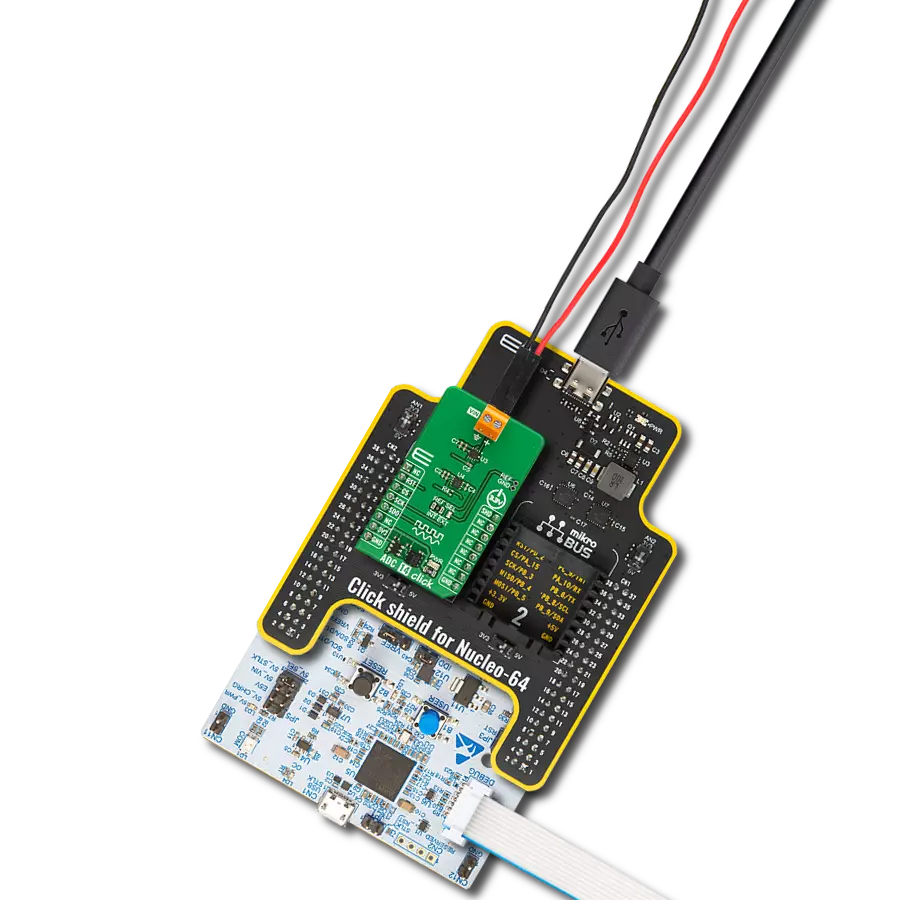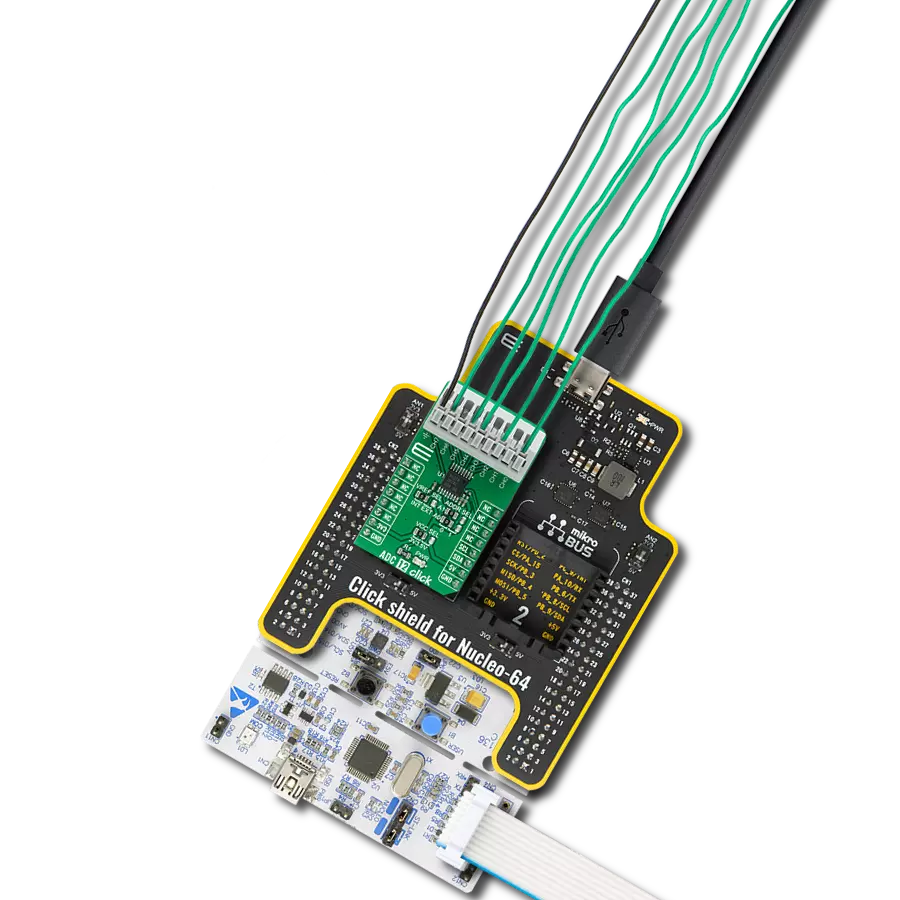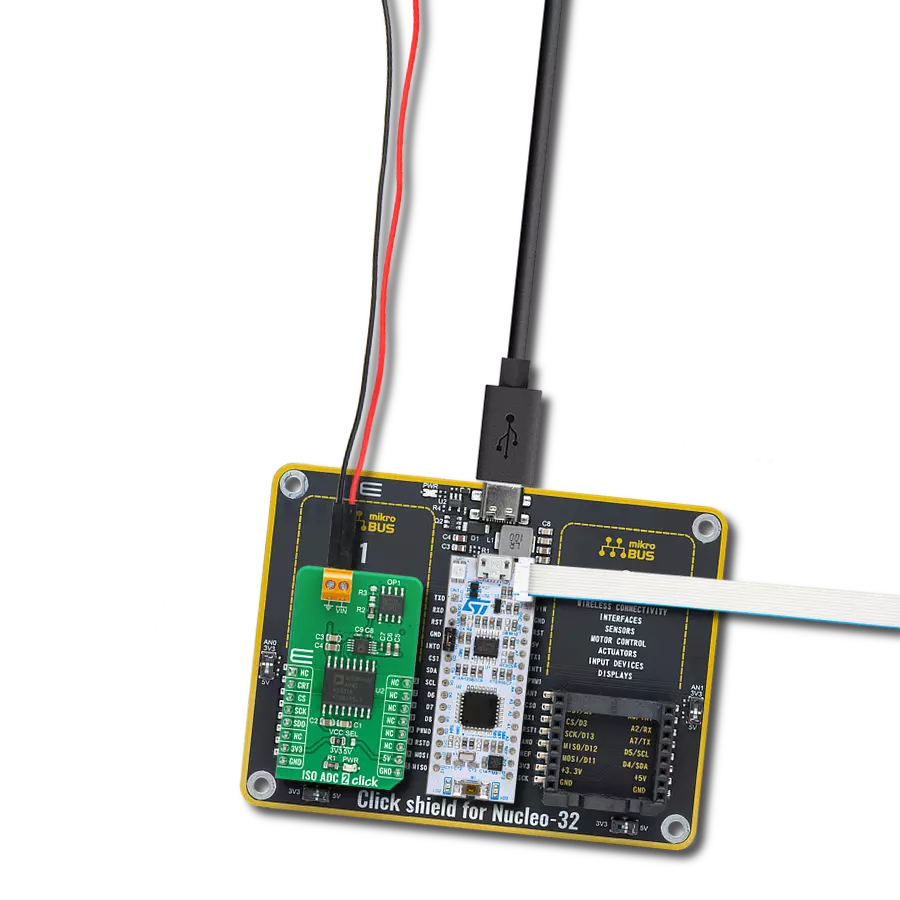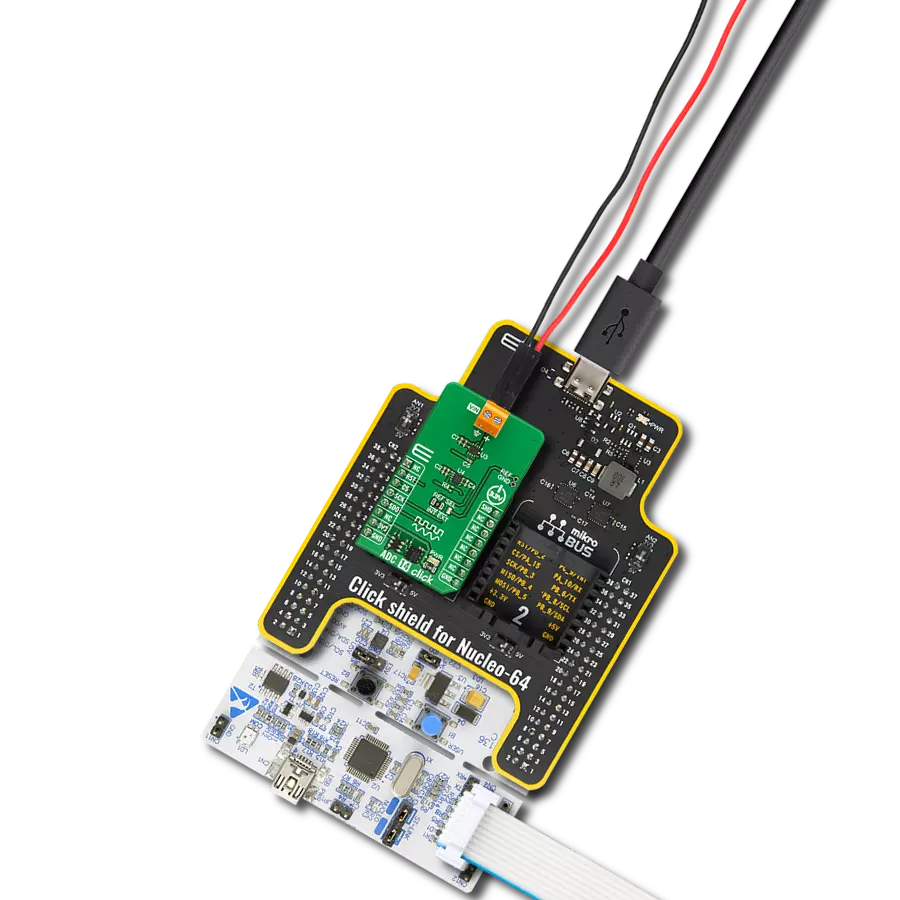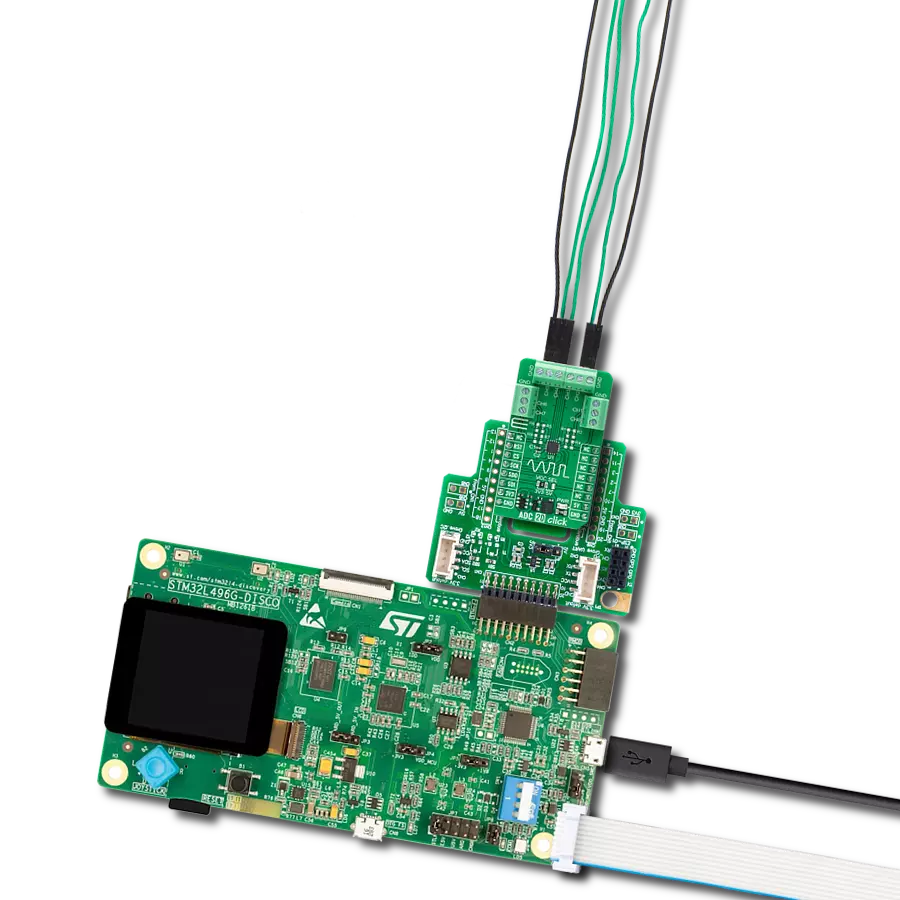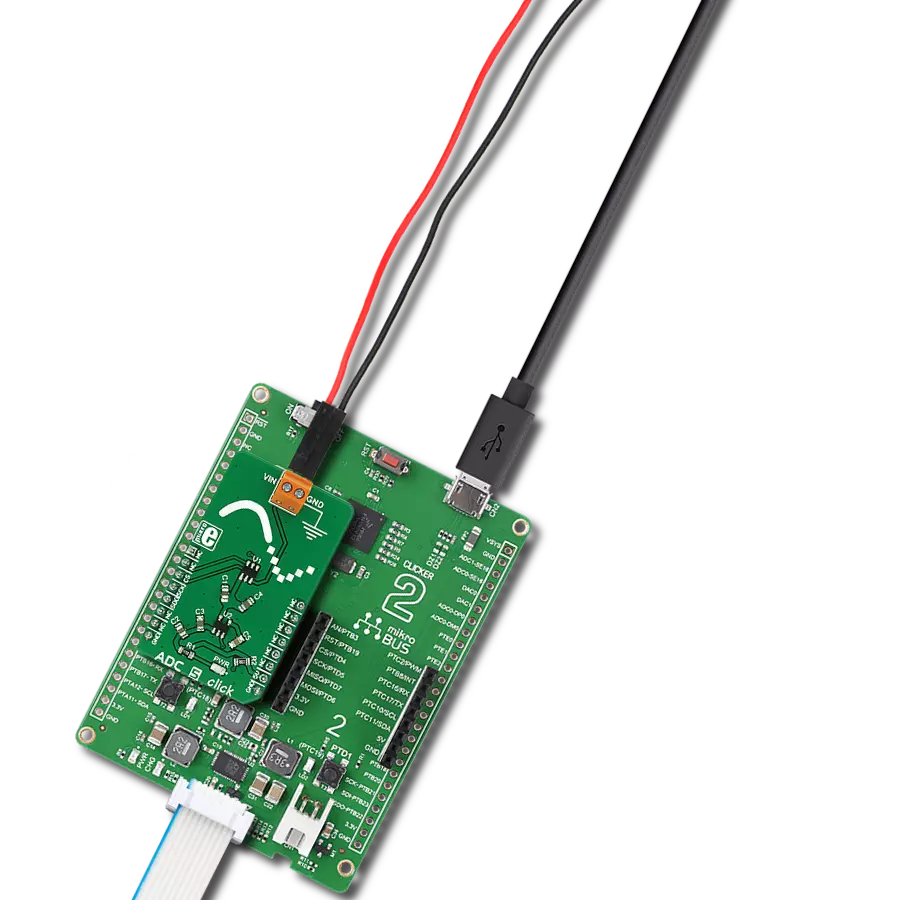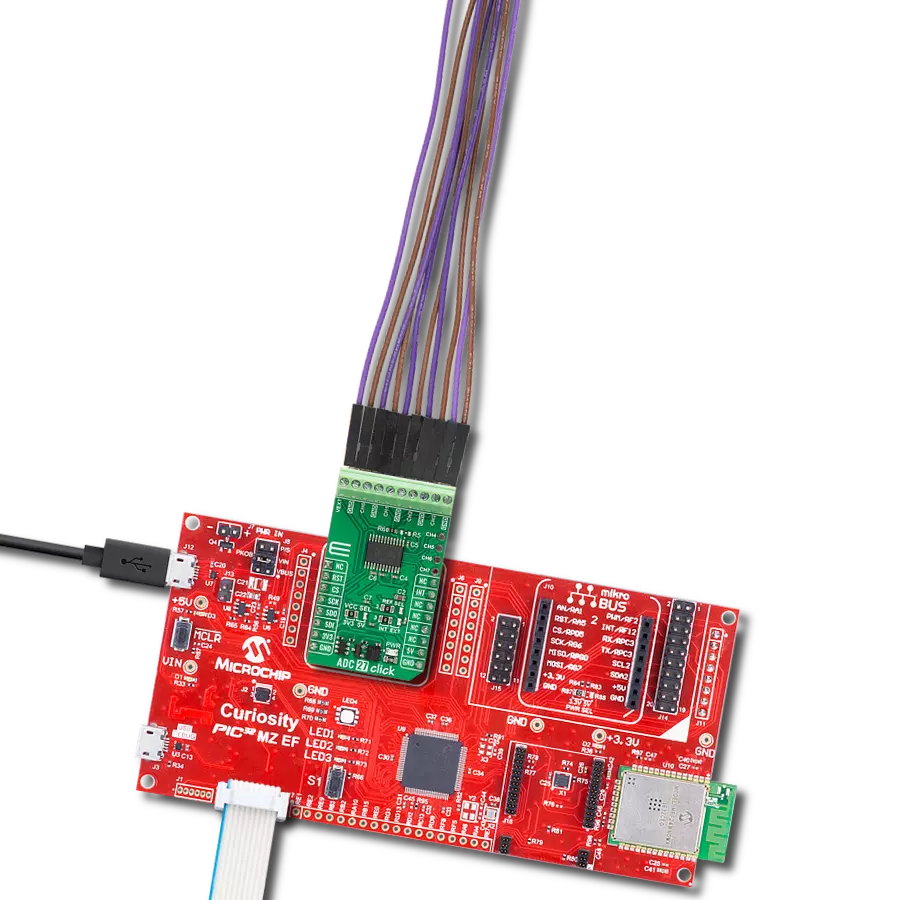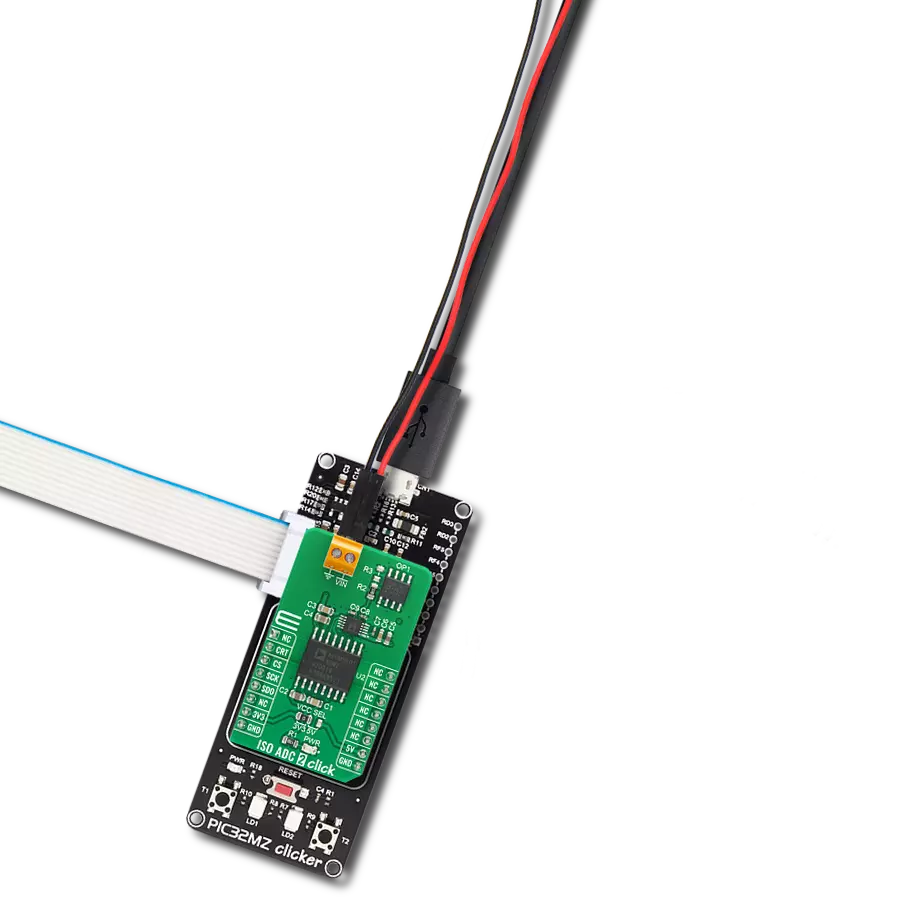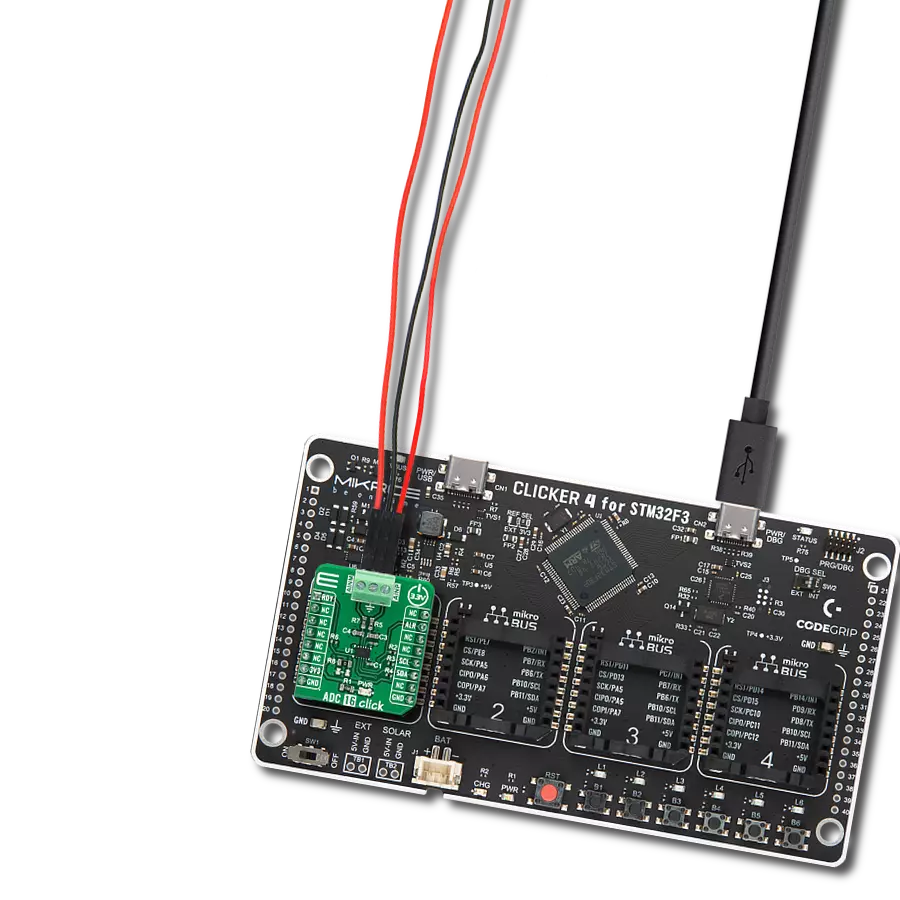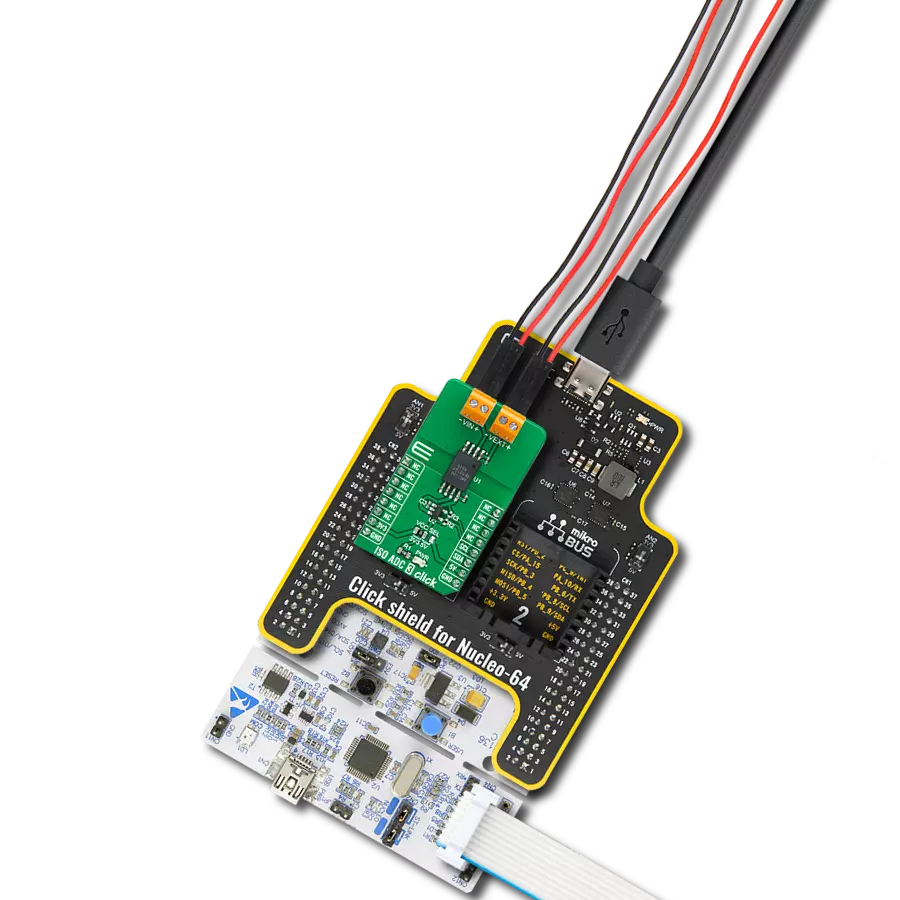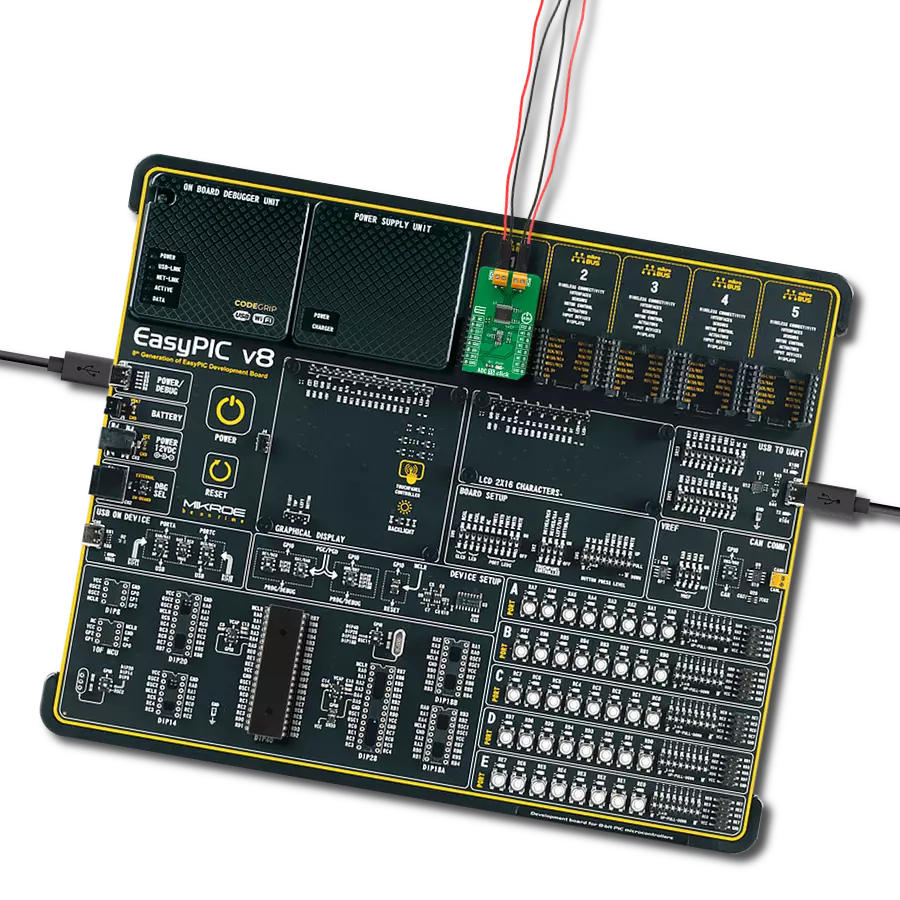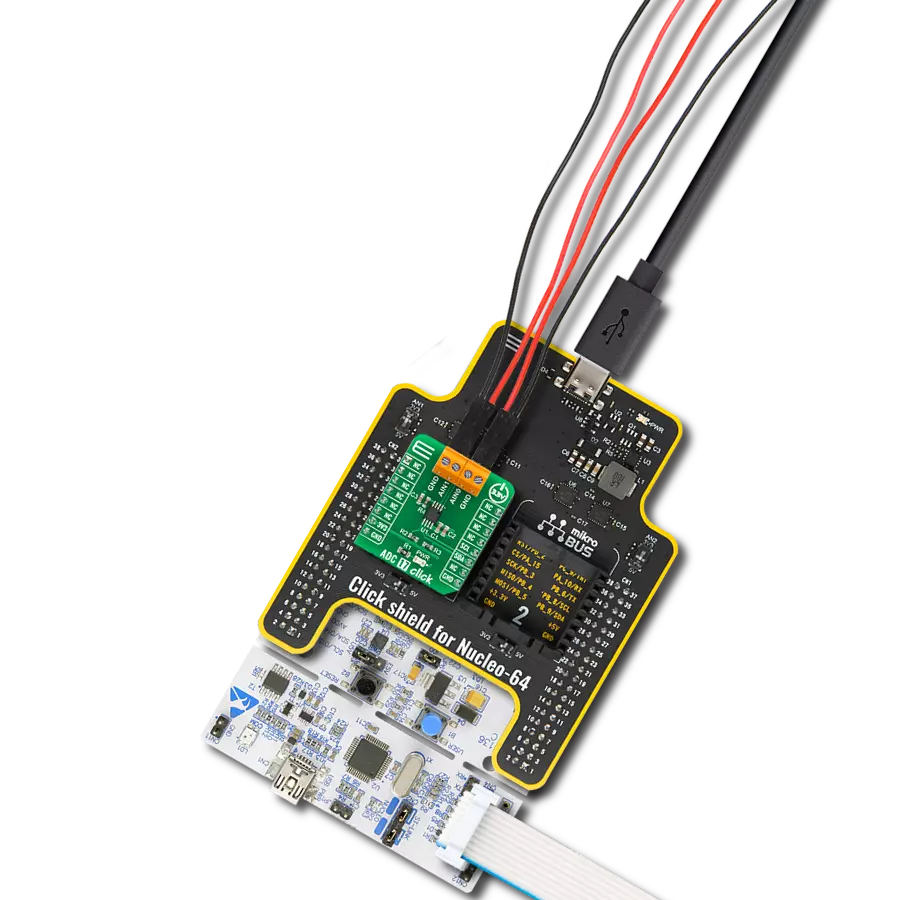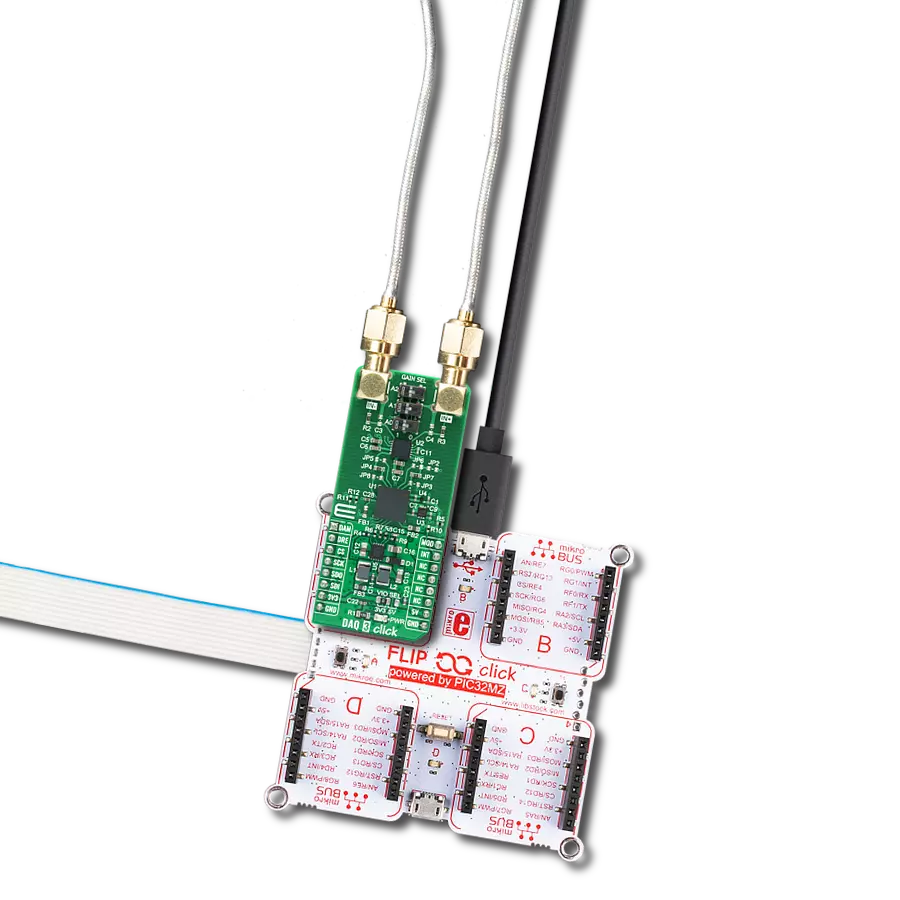Achieve greater efficiency and accuracy in your designs with our top-of-the-line ADC
A
A
Hardware Overview
How does it work?
ADC 19 Click is based on the ADC122S101, a high-performance two-channel CMOS analog-to-digital converter (ADC) from Texas Instruments. The ADC122S101 has an integrated 12-bit SAR-ADC, input multiplexer, and control logic block, allowing ADC to communicate with MCU through a high-speed serial interface. Unlike the conventional practice of specifying performance at a single sample rate, this ADC is fully specified over a sample rate range of 500ksps to 1Msps.
The converter is based on a successive approximation register architecture with an internal track-and-hold circuit configurable to accept one or two input signals at its input channels. This ADC 19 Click communicates with MCU through a standard SPI interface and operates at clock rates up to 16MHz, providing data in a digital format of 12 bits. The output serial data is straight binary and is compatible with several standards, such as SPI, QSPI, MICROWIRE, and many
standard DSP serial interfaces. This Click board™ can operate with either 3.3V or 5V logic voltage levels selected via the VCC SEL jumper. This way, both 3.3V and 5V capable MCUs can use the communication lines properly. However, the Click board™ comes equipped with a library containing easy-to-use functions and an example code that can be used, as a reference, for further development.
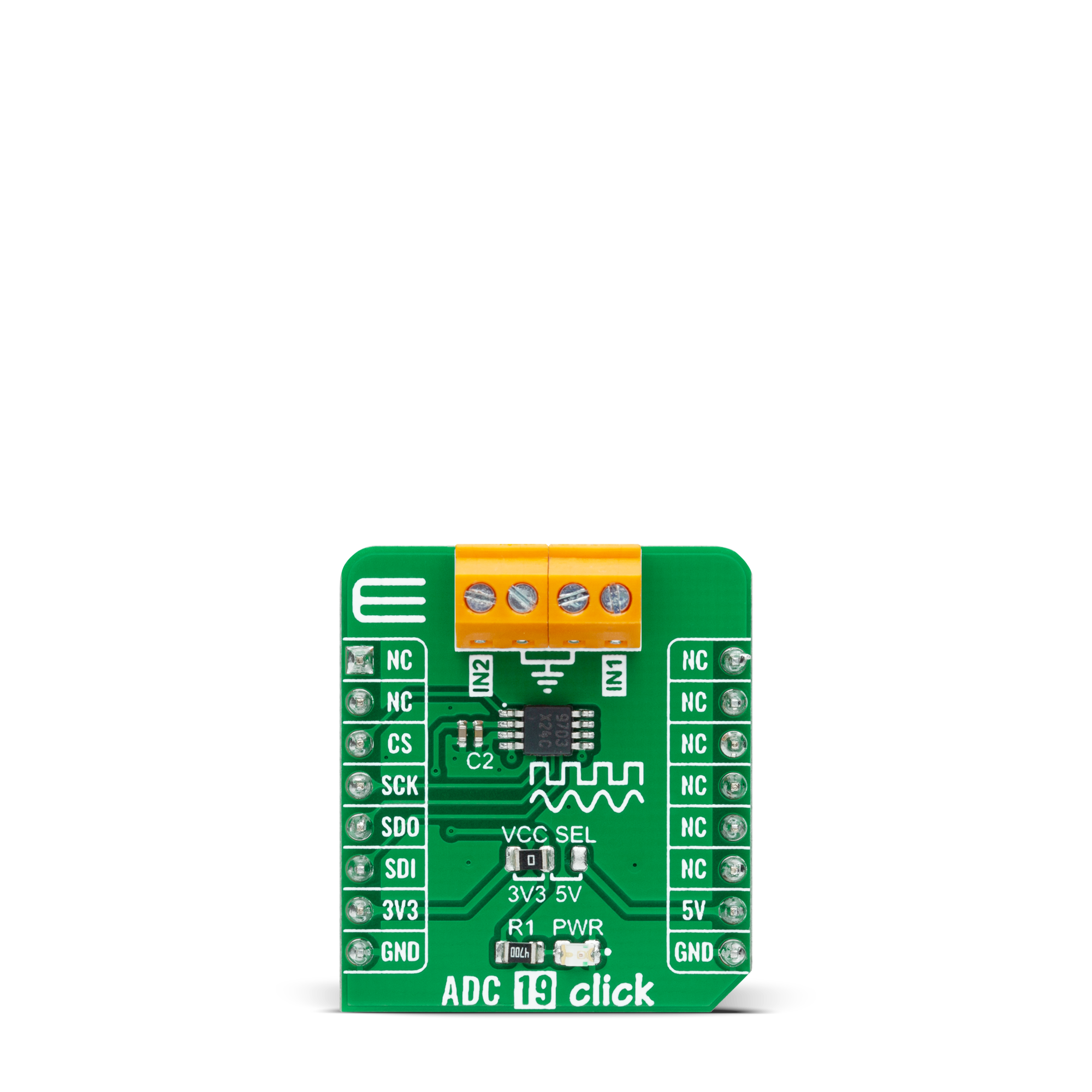

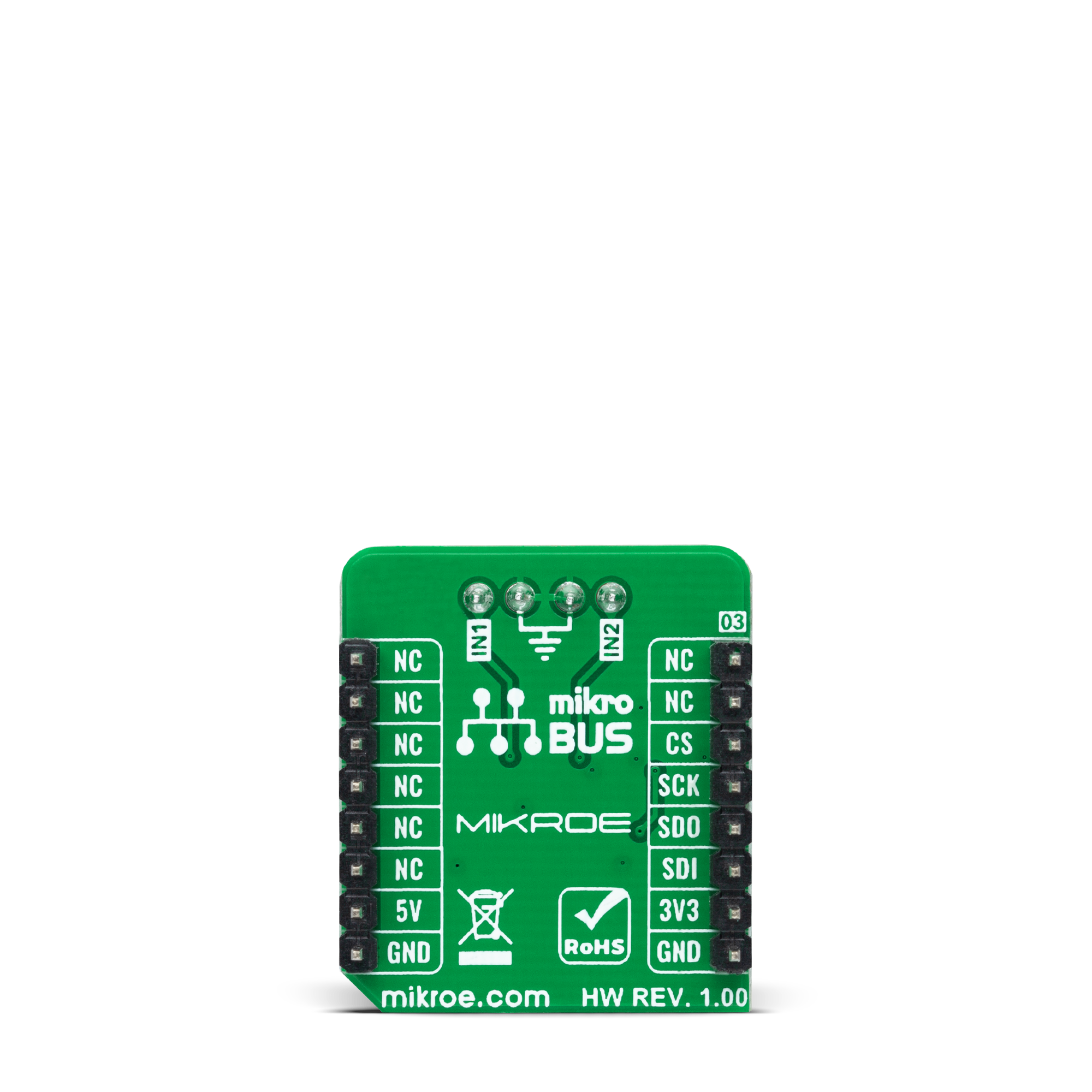
Features overview
Development board
Clicker 2 for Kinetis is a compact starter development board that brings the flexibility of add-on Click boards™ to your favorite microcontroller, making it a perfect starter kit for implementing your ideas. It comes with an onboard 32-bit ARM Cortex-M4F microcontroller, the MK64FN1M0VDC12 from NXP Semiconductors, two mikroBUS™ sockets for Click board™ connectivity, a USB connector, LED indicators, buttons, a JTAG programmer connector, and two 26-pin headers for interfacing with external electronics. Its compact design with clear and easily recognizable silkscreen markings allows you to build gadgets with unique functionalities and
features quickly. Each part of the Clicker 2 for Kinetis development kit contains the components necessary for the most efficient operation of the same board. In addition to the possibility of choosing the Clicker 2 for Kinetis programming method, using a USB HID mikroBootloader or an external mikroProg connector for Kinetis programmer, the Clicker 2 board also includes a clean and regulated power supply module for the development kit. It provides two ways of board-powering; through the USB Micro-B cable, where onboard voltage regulators provide the appropriate voltage levels to each component on the board, or
using a Li-Polymer battery via an onboard battery connector. All communication methods that mikroBUS™ itself supports are on this board, including the well-established mikroBUS™ socket, reset button, and several user-configurable buttons and LED indicators. Clicker 2 for Kinetis is an integral part of the Mikroe ecosystem, allowing you to create a new application in minutes. Natively supported by Mikroe software tools, it covers many aspects of prototyping thanks to a considerable number of different Click boards™ (over a thousand boards), the number of which is growing every day.
Microcontroller Overview
MCU Card / MCU
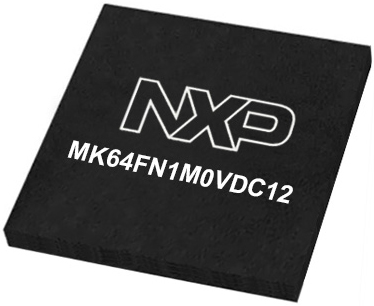
Architecture
ARM Cortex-M4
MCU Memory (KB)
1024
Silicon Vendor
NXP
Pin count
121
RAM (Bytes)
262144
Used MCU Pins
mikroBUS™ mapper
Take a closer look
Click board™ Schematic

Step by step
Project assembly
Software Support
Library Description
This library contains API for ADC 19 Click driver.
Key functions:
adc19_set_vrefThis function sets the voltage reference value that will be used for voltage calculation.adc19_set_input_channelThis function sets the selected input channel active by modifying the control register.adc19_get_voltageThis function reads the voltage from the previously selected channel by using SPI serial interface.
Open Source
Code example
The complete application code and a ready-to-use project are available through the NECTO Studio Package Manager for direct installation in the NECTO Studio. The application code can also be found on the MIKROE GitHub account.
/*!
* @file main.c
* @brief ADC19 Click example
*
* # Description
* This example demonstrates the use of ADC 19 Click board by reading
* the voltage from the two analog input channels.
*
* The demo application is composed of two sections :
*
* ## Application Init
* Initializes the driver and logger and sets the ADC voltage reference.
*
* ## Application Task
* Reads and displays the voltage from the two analog input channels
* on the USB UART approximately every 500ms.
*
* @author Stefan Filipovic
*
*/
#include "board.h"
#include "log.h"
#include "adc19.h"
static adc19_t adc19;
static log_t logger;
void application_init ( void )
{
log_cfg_t log_cfg; /**< Logger config object. */
adc19_cfg_t adc19_cfg; /**< Click config object. */
/**
* Logger initialization.
* Default baud rate: 115200
* Default log level: LOG_LEVEL_DEBUG
* @note If USB_UART_RX and USB_UART_TX
* are defined as HAL_PIN_NC, you will
* need to define them manually for log to work.
* See @b LOG_MAP_USB_UART macro definition for detailed explanation.
*/
LOG_MAP_USB_UART( log_cfg );
log_init( &logger, &log_cfg );
log_info( &logger, " Application Init " );
// Click initialization.
adc19_cfg_setup( &adc19_cfg );
ADC19_MAP_MIKROBUS( adc19_cfg, MIKROBUS_1 );
if ( SPI_MASTER_ERROR == adc19_init( &adc19, &adc19_cfg ) )
{
log_error( &logger, " Communication init." );
for ( ; ; );
}
adc19_set_vref ( &adc19, ADC19_VREF_3V3 );
log_info( &logger, " Application Task " );
}
void application_task ( void )
{
float voltage;
if ( ADC19_OK == adc19_set_input_channel ( &adc19, ADC19_INPUT_CHANNEL_1 ) )
{
if ( ADC19_OK == adc19_get_voltage ( &adc19, &voltage ) )
{
log_printf ( &logger, " IN1 : %.3f V \r\n", voltage );
}
}
if ( ADC19_OK == adc19_set_input_channel ( &adc19, ADC19_INPUT_CHANNEL_2 ) )
{
if ( ADC19_OK == adc19_get_voltage ( &adc19, &voltage ) )
{
log_printf ( &logger, " IN2 : %.3f V \r\n\n", voltage );
}
}
Delay_ms ( 500 );
}
int main ( void )
{
/* Do not remove this line or clock might not be set correctly. */
#ifdef PREINIT_SUPPORTED
preinit();
#endif
application_init( );
for ( ; ; )
{
application_task( );
}
return 0;
}
// ------------------------------------------------------------------------ END

















